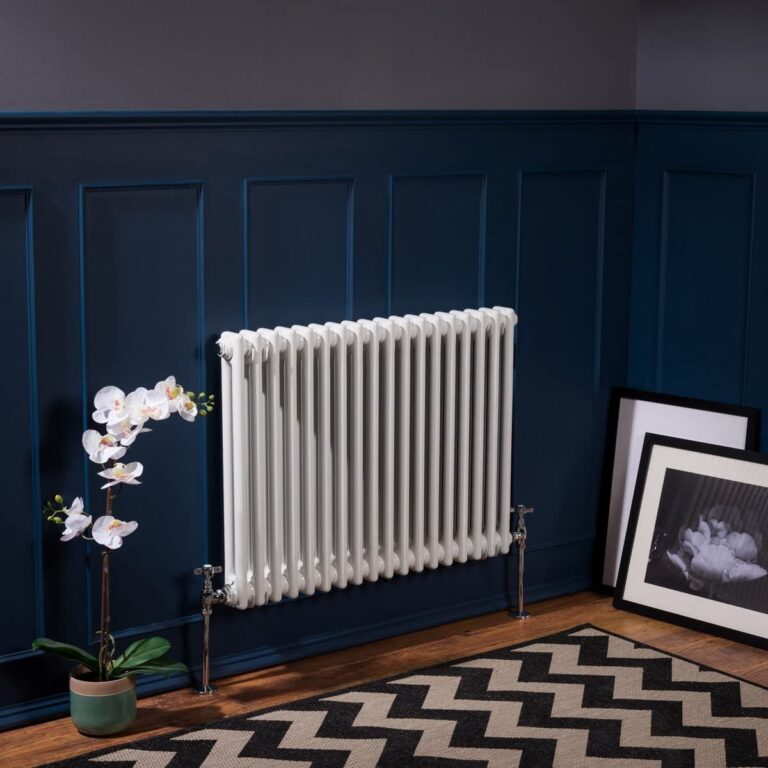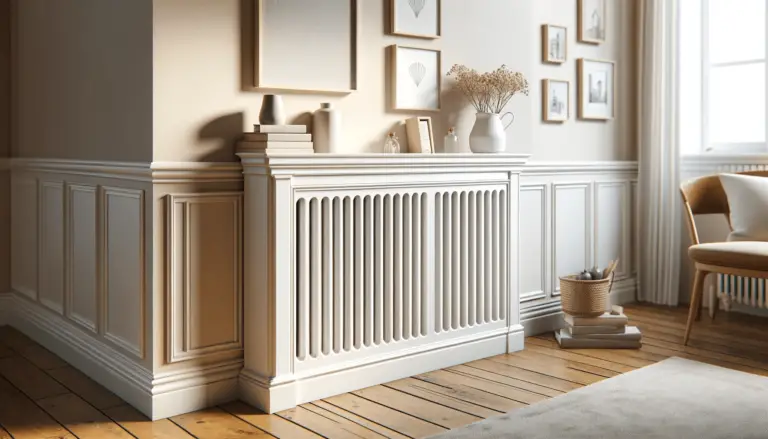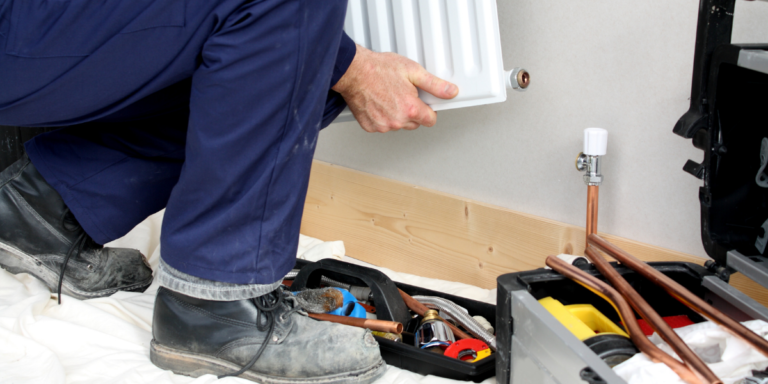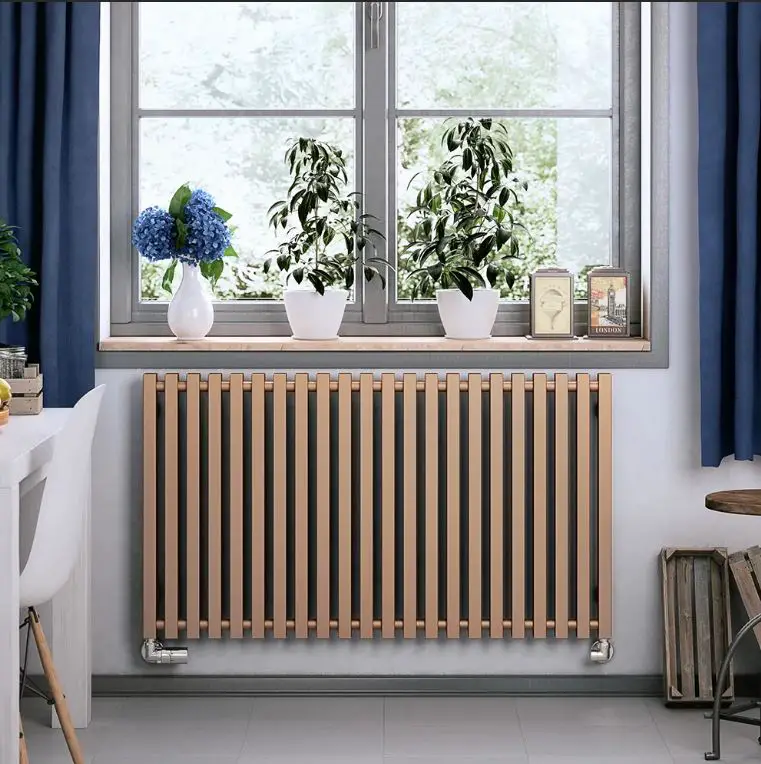Do you ever feel like your home just never gets quite warm enough, no matter how high you turn up the thermostat? The problem may not be with your heating system itself, but rather with the efficiency of your radiators.
Radiators are a crucial component of any heating system, but if they’re not working at their best, your home won’t be as warm and cosy as it could be. Luckily, there are several things you can do to improve the efficiency of your radiators and get your home feeling toasty in no time.
In this article, we’ll take a closer look at how you can improve the performance of your radiators. From simple solutions like installing radiator reflectors and cleaning your radiators regularly, to more complex tasks like balancing your radiators and upgrading to more efficient models, we’ll cover everything you need to know to get the most out of your heating system.
By following these tips and tricks, you’ll not only improve the warmth and comfort of your home, but also save money on your energy bills in the long run. So let’s get started!
1. Use A Radiator Reflector
Want to save money on your heating bill and improve the efficiency of your radiator? Try using a radiator reflector! These foil panels are specifically designed to reflect heat back into your room instead of being absorbed by the wall.
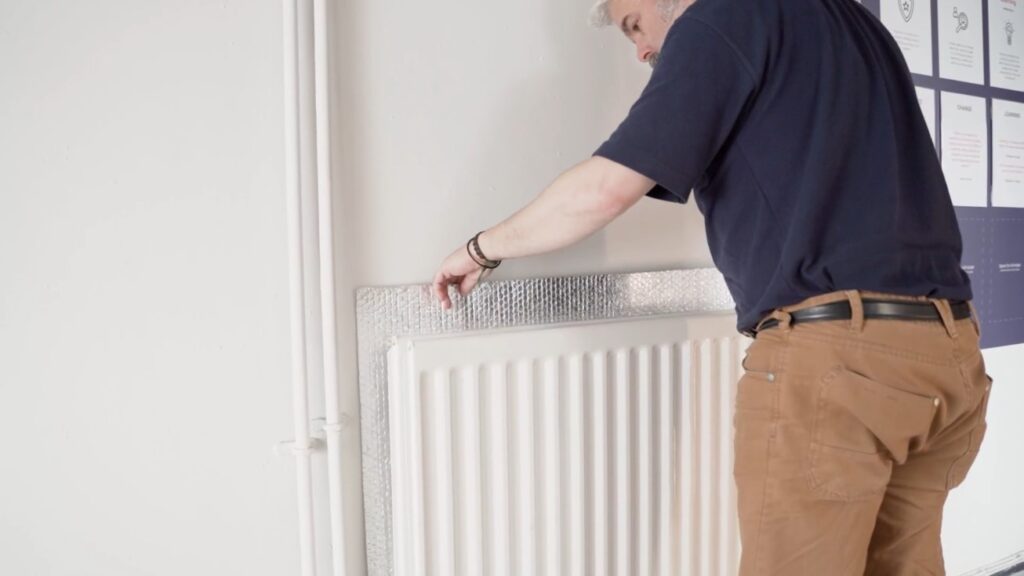
In fact, companies like Radflek claim that their radiator reflectors can reflect up to 95% of the heat coming off the back of the radiator back into the room. But what makes radiator reflectors so effective?
Environmental chamber experiments have shown that the heat loss through the area of wall immediately behind the radiator can fall to less than 30% of the original value when a foil is installed. That means the heat that would have been lost through the wall is now being redirected back into your room, keeping you warmer and reducing your heating costs.
Plus, radiator reflectors can be cut to size so that the reflective surface is fully hidden behind the radiator, ensuring that they won’t affect the overall design of your home. So, if you want to improve your radiator’s efficiency, using a radiator reflector is definitely worth considering.
2. Clean You Radiator Regularly
Regularly cleaning your radiator is a simple and effective way to improve its efficiency. Dust and dirt build-up can significantly reduce its effectiveness, making it less efficient in heating up a room.
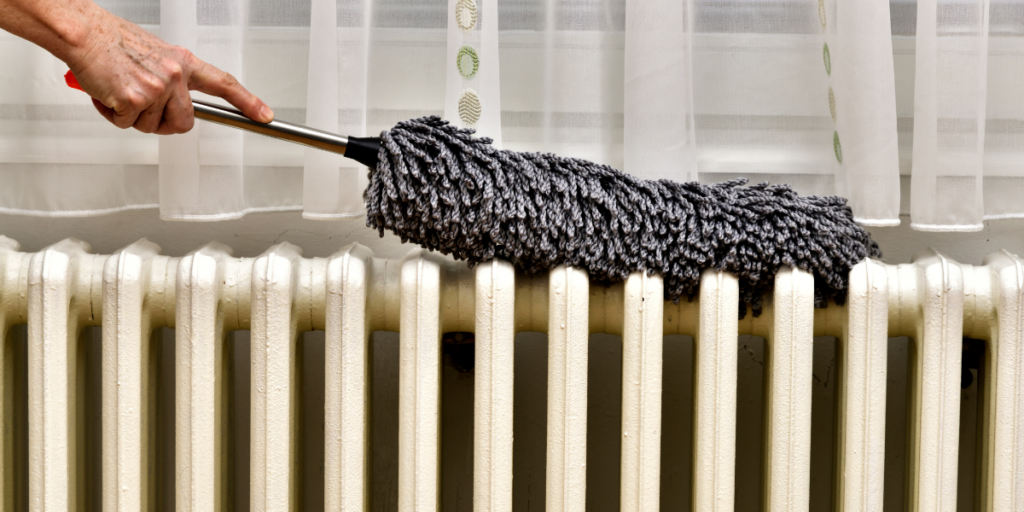
To clean your radiator, use a duster to get behind it and remove any external dust. For internal dust, use a hairdryer set to its highest setting and point it down the radiator between the fins. This should force out all the collected dust and dirt and send it towards the floor.
By cleaning your radiator regularly, you can ensure that it runs smoothly and effectively, helping you save on energy costs and keeping your home warm and comfortable. A clean radiator can also prevent the build-up of mould and bacteria, which can be harmful to your health.
Additionally, it can help prolong the lifespan of your radiator, saving you money on repairs or replacements in the long run. So, make sure to add radiator cleaning to your regular home maintenance routine to keep it running at its best.
3. Install Thermostatic Radiator Valves
Installing thermostatic radiator valves, or TRVs, can be a cost-effective and convenient way to regulate the heat output of your radiators. TRVs work by sensing the air temperature in a room and adjusting the flow of hot water to the radiator accordingly.
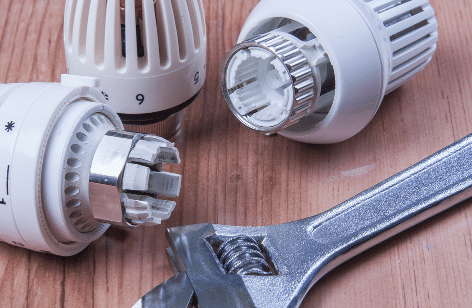
This means that you can maintain a comfortable temperature in a room without wasting energy and money by overheating it. TRVs are also great for rooms that are not used as often. By turning down the valve in these rooms, you can reduce the amount of hot water flowing through the radiator, which means less heat is lost and your boiler doesn’t have to work as hard.
This can ultimately save you money on your energy bills. Additionally, TRVs can help to prevent moisture build up and reduce condensation, which can be particularly useful in areas like bathrooms and kitchens. Installing TRVs is a simple and effective way to improve the efficiency of your radiators and make your home more comfortable.
4. Bleed Your Radiators
If you’re feeling chilly and your radiators are making strange noises, it’s time to bleed them to ensure they’re working at their best. Bleeding a radiator is a simple process that involves releasing trapped air from the heating system.
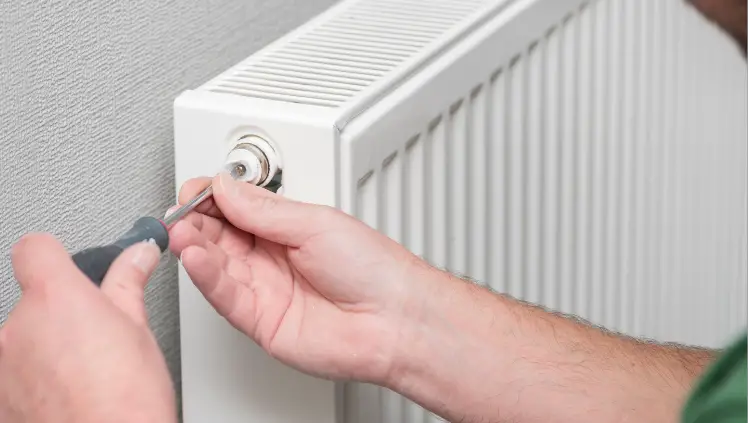
When air gets trapped inside, it can prevent hot water from flowing freely, causing your radiators to heat unevenly or not at all. Bleeding your radiators is an important maintenance task that can help you to save money on your energy bills.
When your radiators are working efficiently, they’ll warm your home more effectively, reducing the need for extra heating. By releasing trapped air, you’ll also prevent damage to your heating system caused by corrosion and rust.
So, if you want to keep your home warm and cosy this winter, make sure to bleed your radiators regularly.
5. Balance Your Radiators
To make sure your radiators are heating evenly and effectively, try balancing them by following these simple steps.
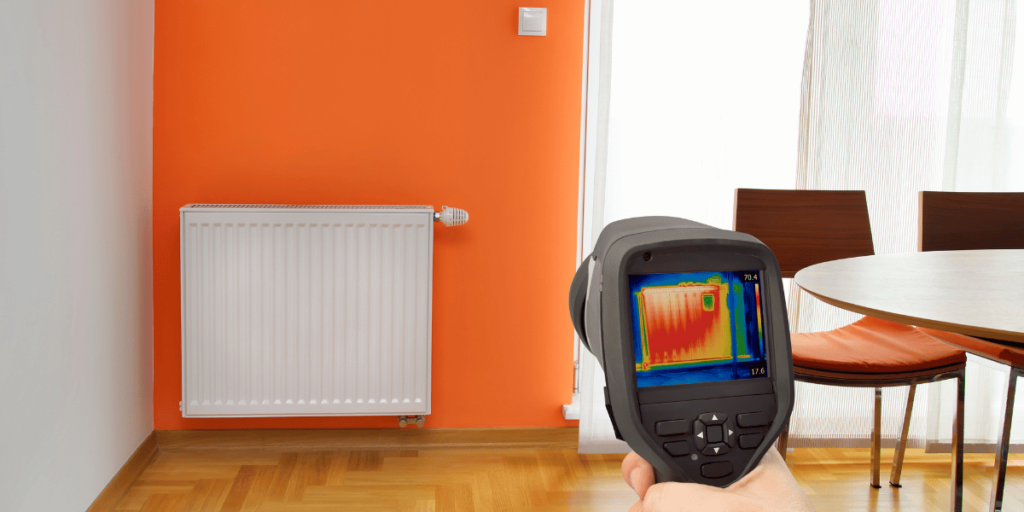
Begin by closing all the valves on each radiator in your system.
Then, slowly turn each valve on in small increments, starting with the one closest to your boiler and working your way towards the one furthest away. For instance, the radiator nearest to your boiler may only need a quarter turn to open, while the next one needs a little more. Keep turning each valve until you reach the radiator that is furthest away from your boiler, which should be opened fully.
Balancing your radiators like this will ensure that they all heat up consistently and evenly, so you can avoid the problem of having one radiator that is burning hot while another is lukewarm or even cold. This simple method only takes a few minutes to complete, but it’ll help you get the most out of your central heating system, leading to lower bills and cosier spaces.
6. Check Your Boiler Pressure
Check your boiler pressure now to ensure your heating system is working efficiently and effectively. This is crucial in keeping your home warm and cosy during the cold winter months.
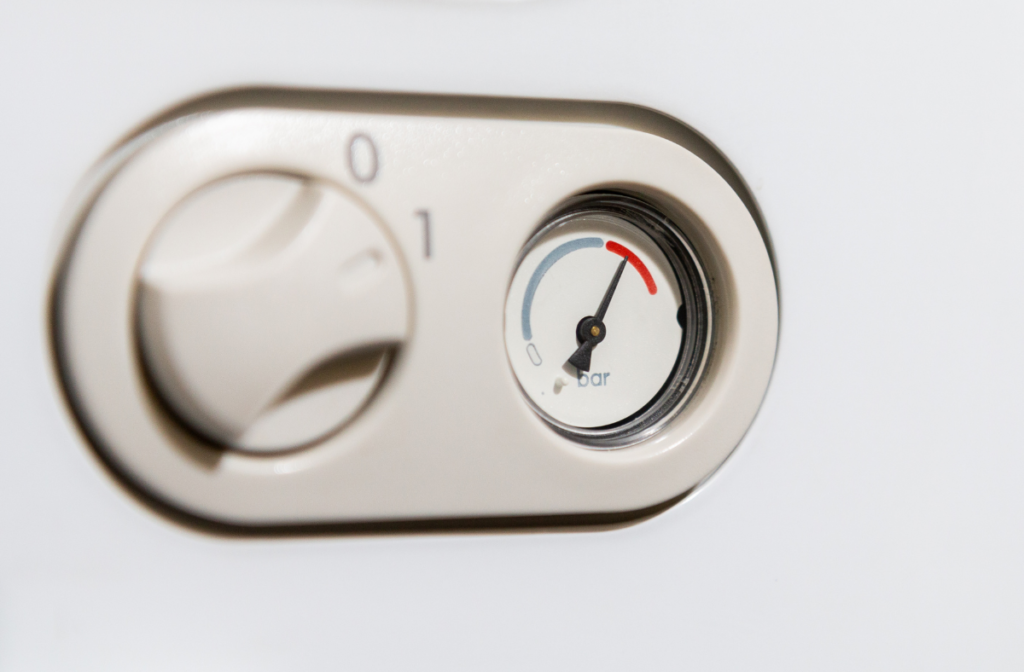
If the pressure gauge on your boiler is showing above 1.5bar, this may indicate that you need to release some of the pressure by bleeding one or more of your radiators. Failure to do so may lead to a drop in efficiency and increased energy bills.
When you release the trapped air from your radiators, be sure to check your boiler pressure again to ensure optimum performance. It’s important to maintain the correct level of water in the system, which should be sitting in or around 1.2 to 1.5bar.
This will guarantee that your heating system is working as efficiently as possible, saving you money on energy bills and reducing your carbon footprint. So, take a few minutes to check your boiler pressure and make sure your heating system is running at its best.
7. Flush Your Radiators
You can easily improve the performance of your heating system by flushing your radiators with a hosepipe or pressure washer. Doing so will remove any blockages that may be limiting your radiator’s efficiency. This is especially important if you’ve noticed that some of your radiators aren’t heating up as quickly or as evenly as others.

To flush your radiators, simply remove them from the wall and use a hosepipe or pressure washer to blast the water through the pipes. This will help to dislodge any debris that may be blocking the flow of water.
Once you’ve finished flushing your radiators, you should notice a significant improvement in their performance. They should heat up more quickly and evenly, which will help to keep your home warm and comfortable throughout the colder months.
8. Consider A Radiator Booster Fan
Boost the heat in your room with a small radiator fan that sits on top of the radiator and blows warm air upwards. These fans can improve the standard convection properties of your radiator, which means they can increase the amount of heat delivered to a room.
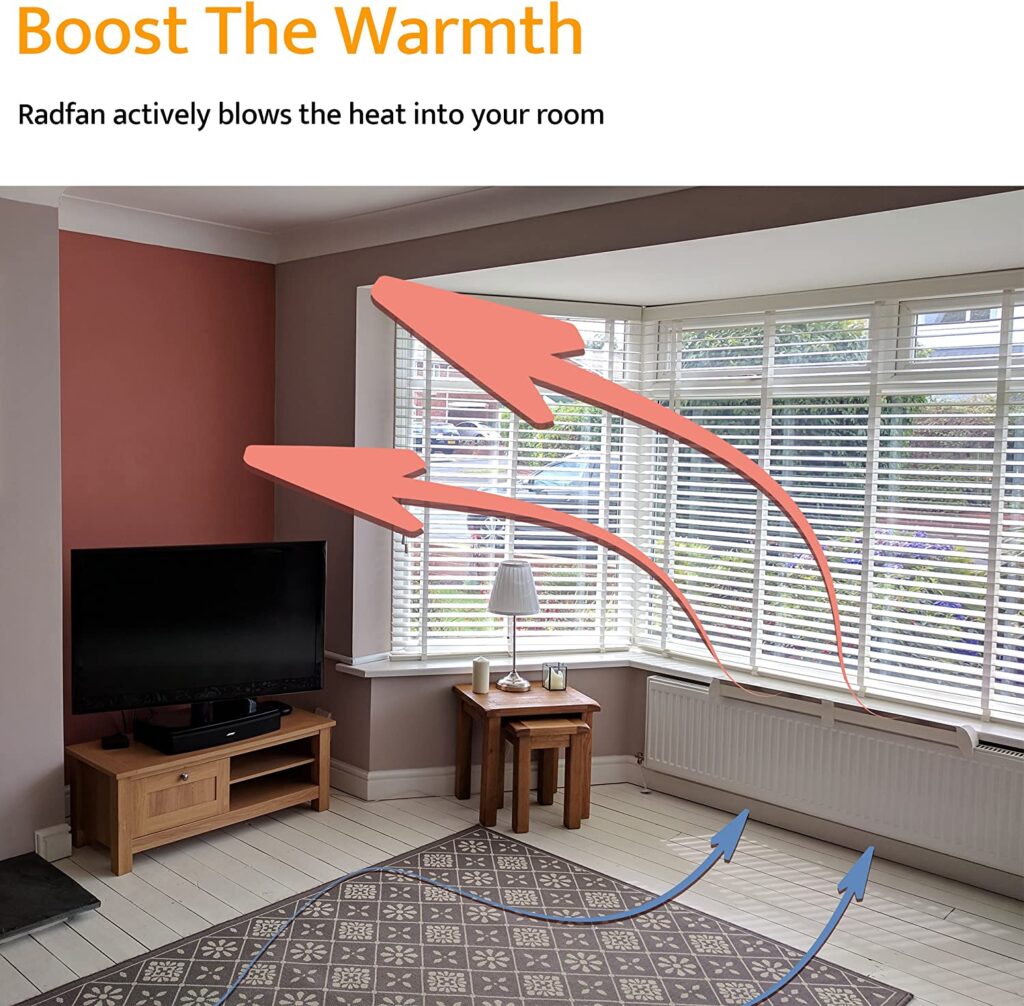
They work by taking the hot air that naturally rises from your radiator and blowing it around the room, which can help to distribute heat more evenly and effectively. Radiator booster fans are especially helpful in smaller spaces, where the heat from a standard radiator may not be enough to keep you warm.
They’re also a great option for rooms that are particularly cold, such as those with a lot of draft or poor insulation. While purpose-built radiator fans can be rather expensive to buy, there are many affordable radiator fans available that can help you to improve the efficiency of your heating system and stay warm and cosy all winter long.
9. Consider Upgrading Your Radiators
If you’re tired of feeling chilly in your own home, it might be time to consider upgrading to new radiators. Old radiators can become inefficient over time, resulting in uneven heating and higher energy bills. Check out our overview of the best radiator brands to see how cool, quirky and efficient they can be… There are so many styles available, long gone are the days of boring white radiators!
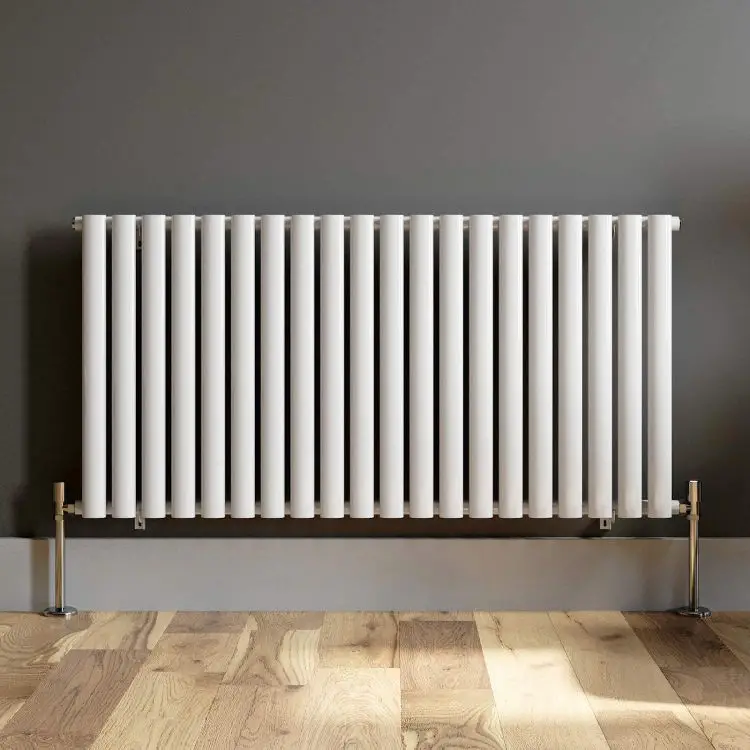
Upgrading your radiators can provide a more consistent and comfortable heating experience, while also reducing your energy costs. When considering a radiator upgrade, there are a few important factors to keep in mind.
First, consider the size and layout of the room. Larger rooms may require larger radiators or multiple radiators to adequately heat the space. Additionally, consider the type of radiator you want to install. Modern radiators can come in a variety of styles and materials, each with their own benefits and drawbacks.
By upgrading your radiators, you can improve the overall efficiency of your heating system and create a more comfortable living space.


